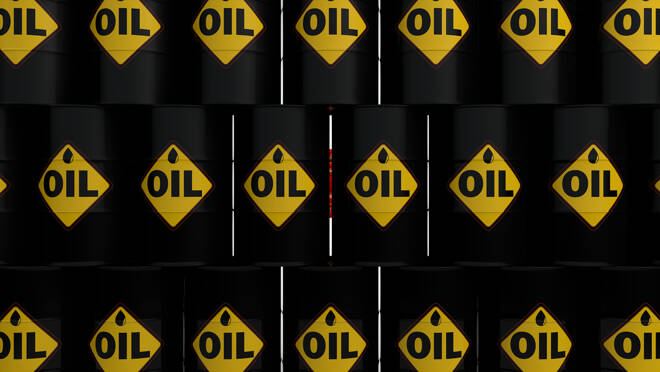Advertisement
Advertisement
Oil Price Fundamental Weekly Forecast – Demand Destruction Worries to Set the Tone
By:
The industry has a major supply-demand imbalance problem.
U.S. West Texas Intermediate and international-benchmark Brent crude oil futures finished lower after hitting a multi-month high earlier in the week. The price action formed a potentially bearish chart pattern on the daily chart that could trigger a 2 to 3 week sell-off or a 50% to 61.8% retracement of its recent 7 week rally.
Last week, August WTI crude oil settled at $36.51, down $3.29 or -8.27% and August Brent crude oil finished at $38.73, down $3.57 or -9.22%.
The markets started out strong last week on the back of the OPEC+ agreement to extend its output cuts. However, throughout the week, traders started to question demand, dampening the potentially bullish impact of the supply cut extension. Among the major concerns were a gloomy outlook for the economy by the Federal Reserve, worries over a surge in new COVID-19 cases and rising U.S. supply.
Fed Economic Outlook Remains Bleak
Concerns over future demand rose to the forefront late Wednesday after the U.S. Federal Reserve said U.S. unemployment was set to reach 9.3% at the end of 2020 and said it would take years to fall back, while interest rates were expected to stay near zero at least through next year. The Fed also said the U.S. economy will shrink by 6.5% this year.
Second Wave of COVID-19 Cases Raises Demand Concerns
Crude oil futures are being pressured this week due to worries about weak global energy demand.
Traders blamed the weakness on concerns over a surge in U.S. coronavirus cases this week that raised the prospect of a second wave of the COVID-19 outbreak hitting demand in the world’s top consumer of crude and fuel.
Reuters said the reality that the coronavirus pandemic may be far from over has brought the rally that raised oil off April lows to a shuddering halt, with infections in the United States alone passing 2 million.
In Houston, Lina Hidalgo, senior official for the county that includes the city at the heart of the U.S. oil industry, said “we may be approaching the precipice of a disaster”.
US Supply Continues to Grow
U.S. crude inventories rose unexpectedly by 5.7 million barrels in the week to June 5 to 538.1 million barrels – a record – as imports were boosted by the arrival of supplies bought by refiners when Saudi Arabia flooded the market with cheap oil in March and April, Energy Information Administration (EIA) data showed.
The EIA report also showed gasoline stockpiles grew more than expected to 258.7 million barrels. Distillate stockpiles, which include diesel and heating oil, rose by 1.6 million barrels, although the increase was smaller than in previous weeks.
Baker Hughes Reports US Oil-Rig Count Down by 7 This Week
Baker Hughes on Friday reported that the number of active U.S. rigs drilling for oil edged down by seven to 199 this week. The number of oil rigs has seen much larger weekly declines in recent weeks, but have been falling on a weekly basis since mid-March. The total active U.S. rig count, meanwhile, also fell by five to 279, according to Baker Hughes.
Weekly Forecast
Last week’s price action suggests investors are already looking beyond the production cut agreement and shifting their focus almost solely on demand. As the events unfolded this week regarding the Fed’s gloomy outlook, the EIA’s bearish numbers, a resurgence in COVID-19 cases and a plunge in the stock market, demand worries moved to the forefront, encouraging buyers to take profits and trim long positions.
Looking forward, the rise in coronavirus cases and a possible second wave of infections is going to be the main price driver over the near-term.
The industry has a major supply-demand imbalance problem and as coronavirus cases rise, demand destruction worries will likely be the biggest influence on prices.
For a look at all of today’s economic events, check out our economic calendar.
About the Author
James Hyerczykauthor
James Hyerczyk is a U.S. based seasoned technical analyst and educator with over 40 years of experience in market analysis and trading, specializing in chart patterns and price movement. He is the author of two books on technical analysis and has a background in both futures and stock markets.
Advertisement
